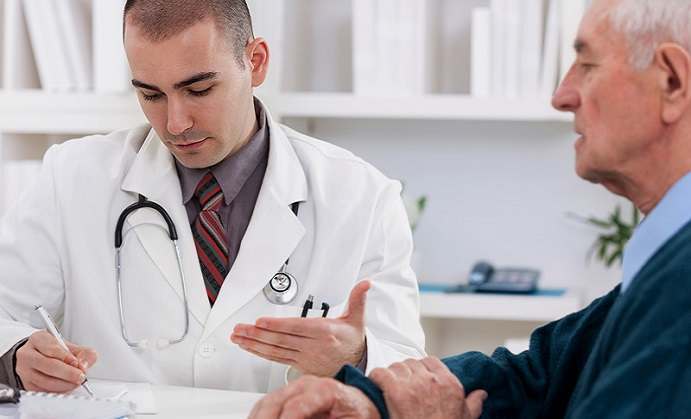Prostate problems often go undetected by many men until they reach their late 30s or early 40s. This walnut-sized gland may have already been growing for several years. It is essential to get acquainted with the body from a medical point of view at an early age. The prostate gland surrounds the urethra and is situated directly below the bladder. Its primary function is to secrete seminal fluid that supports the process of semen ejaculation,
Dr. James Smolev, an assistant professor of urology, underlines the importance of regular testing. It is essential that men over the age of 45 pass an annual prostate examination to detect problems before they can manifest as symptoms. While research shows that there is a link between Enlarged Prostate (BPH) and prostate cancer, typically an enlarged prostate will not lead to cancer but will develop into BPH, otherwise known as benign prostatic hypertrophy.
What To Look For
 As the prostate increases in size, it may create pressure on the urethra. More pressure is produced by the constriction of the muscles encircling the urethra. This pressure may not be painful as such but may create problems with urination. Men with Enlarged Prostate (BPH) may find it difficult to control urination in that it becomes impossible to maintain a steady flow or stop urination. They may have an urgent need to urinate as soon as they feel pressure in the bladder. This can cause sleep disturbances, with the need to wake periodically throughout the night.
As the prostate increases in size, it may create pressure on the urethra. More pressure is produced by the constriction of the muscles encircling the urethra. This pressure may not be painful as such but may create problems with urination. Men with Enlarged Prostate (BPH) may find it difficult to control urination in that it becomes impossible to maintain a steady flow or stop urination. They may have an urgent need to urinate as soon as they feel pressure in the bladder. This can cause sleep disturbances, with the need to wake periodically throughout the night.
Root Causes of Enlarged Prostate
The excessive production of hormones is associated with prostate growth in men, and this increases with age. When men reach their 40s, levels of testosterone and some of the other hormones begins to diminish while others, like prolactin, increase.
Joseph Pizzorno, M.D., president of Bastyr University, has observed that hormone changes eventually lead to higher rates of the male sex hormone dihydrotestosterone (DHT), a modified form of testosterone. DHT is the cause of tissue growth in the area around the prostate gland, which in turn causes Enlarged Prostate (BPH).
The enzyme 5-alpha-reductase transforms testosterone into DHT, so to stave off Enlarged Prostate (BPH), treatments must be able to prevent the enzyme from affecting the testosterone.
Getting Treatment
 Half of the male population over age 50 may have symptoms of Enlarged Prostate (BPH), and this tends to increase with age. These symptoms usually become worse without treatment, though it may vary according to their level of susceptibility. According to Dr. Richard Macchia, some men will notice a marked increase in symptoms during a period of six years, while others notice some symptoms less predictably in earlier or later in life, and even with an absence of change in symptoms for more than 15 years. In some cases, the symptoms remain stable and don’t worsen.
Half of the male population over age 50 may have symptoms of Enlarged Prostate (BPH), and this tends to increase with age. These symptoms usually become worse without treatment, though it may vary according to their level of susceptibility. According to Dr. Richard Macchia, some men will notice a marked increase in symptoms during a period of six years, while others notice some symptoms less predictably in earlier or later in life, and even with an absence of change in symptoms for more than 15 years. In some cases, the symptoms remain stable and don’t worsen.
There are many ways to treat the various aspects of prostate health. Doctors will tend to want to treat Enlarged Prostate (BPH) with medications and surgical interventions, but there are natural remedies available as well. Depending on the case, there may be room for alternative treatments. This can be discussed with a physician.











